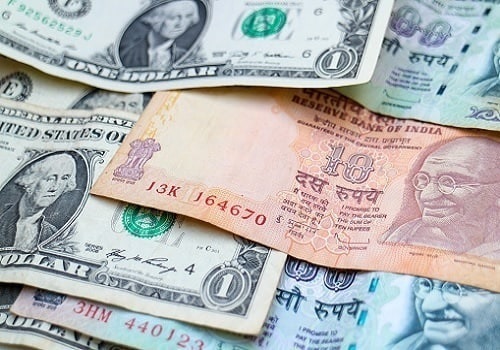Dollar firm ahead of global inflation data

The dollar made a steady start to the week, as investors were focused on U.S., European and Japanese inflation data to guide the global interest rate outlook.
Foreign exchange trade has been dominated by the hunt for "carry" in recent months, punishing low-rate currencies and supporting the dollar while U.S. data has blown hot and cold and dented policymakers' confidence on the rates outlook.
Several major pairs have hugged tight ranges. The euro, which gained 0.9% on the dollar last week, was in the middle of a range it has held for more than a year at $1.0846. Trading on Monday was thinned by holidays in Britain and the United States.
German inflation on Wednesday and euro zone readings on Friday will be watched for confirmation of a European rate cut that traders have priced for next week.
Sterling was testing the top side of a range it has held this year at $1.2735. The Australian and New Zealand dollars have eased from recent highs, leaving the Aussie at $0.6626 and the kiwi at $0.6122 as markets have dialled back interest rate cut expectations for the U.S.
Friday's reading for the core personal consumption expenditures price index, the Federal Reserve's preferred inflation measure is expected to be steady month-on-month, so a surprise either way could move currency markets.
The dollar had fallen back after data showed a slowdown in consumer price rises in April and disappointing retail sales, before strengthening last week thanks to better-than-expected PMI survey data.
"Focus on core PCE revolves around whether the drivers of inflation are part of the consumer mood shift," said Bob Savage, BNY Mellon's head of markets strategy and insights.
CARRY ON
While the rates uncertainty persists, investors have been chasing income and selling low yield currencies such as the yen, yuan and Swiss franc against the euro and the dollar.
The Swiss franc has been falling all year and at 0.9928 francs per euro touched the lowest since April 2023 last week. China's yuan finished last week weaker than 7.24 per dollar, its lowest level since early May.
The yen may seal its first monthly gain of the year this month thanks to suspected intervention from Japanese authorities towards the end of April and at the start of May, but it has been slipping back towards multi-decade lows since then.
It was steady at 156.87 to the dollar on Monday but has won little support from rising Japanese government bond yields as at the ten-year tenor, for example, they remain nearly 350 basis points below U.S. yields.
Tokyo CPI, due on Friday, is a reliable guide to the national trend and will be closely watched. The U.S. move to shorten equity-market settlement from two days to one will also be closely watched in currency trade this week as dealers expect it may drive trade into the quiet early mornings in Asia.
"It remains to be seen how each bank or liquidity provider will respond once the T+1 changes go into effect and there is a practical need to execute sizeable FX trades during timeframes that currently do not see this type of volume," said Scott Gold, head of sales at BidFX, a trading technology platform.
"Right now, only around 0.6% of all FX volume is executed between 4 – 6 p.m. (New York time) so it's very illiquid and spreads are considerably wider."
In cryptocurrency markets, ether closed out its largest weekly rise in nearly three years after a surprise approval for some U.S. exchange-traded fund (ETF) applications.
Further approvals remain necessary before launch, but the price of the second-biggest cryptocurrency by market value rose 25% against the dollar last week and was last at $3836.
"A month ago, many people would've put the likelihood of an ETH ETF low or far out in the future," said Justin D'Anethan, head of partnerships at digital assets market maker Keyrock.























